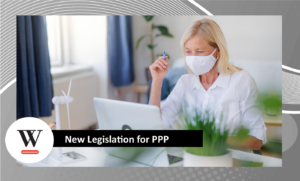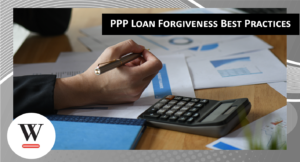Congress approved sweeping changes to PPP. Here are the details. The bill now heads to President Trump for his signature.
……………………………………………………………………
 To our clients and friends:
To our clients and friends:
Thank you for staying with us as we try to navigate the rapidly shifting rules of the SBA’s PPP loan and forgiveness program. We all hope you are safe and healthy.
On June 3, 2020 the Senate unanimously approved a bill to loosen restrictions for PPP loan forgiveness. This bill is identical to the one that passed the House on May 28, 2020. President Trump will likely sign it into law perhaps as early as today.
A summary of what the bill has to offer:
- Loan recipients now have longer to repay NON-forgiven proceeds. The payback period is now 5 years instead of 2. Lenders and borrowers are free to renegotiate the terms of existing PPP loans to match the 5-year payback.
- The “covered period” may total 24 weeks. When your loan funded you had 8 weeks to spend the proceeds – that is now or until December 31, 2020, whichever comes earlier. Borrowers can opt to maintain the original 8-week period.
- More can be spent on non-payroll costs. The new bill allows borrowers to use 40% (instead of 25%) on non-payroll items. Please note, if you fail to use 60% of proceeds on payroll costs NONE of the loan will be forgiven.
- You may now rehire workers and restore FTEs any time before December 31, 2020 instead of June 30, 2020. You will want to restore your FTE or hourly wage earners to February 15, 2020 levels prior to the end of 2020.
- You can achieve full forgiveness even if the workforce is not fully restored due to: a) businesses remaining partially or fully closed through the end of the year; b) eligible workers rejecting good faith offers to return; and c) COVID-19 compliance restrictions or business operation restrictions preventing achieving February 2020 levels.
- PPP recipients may delay paying their portion of social security and Medicare payroll taxes. Those taxes can now be deferred, 50% until the end of 2021 and 50% until end of 2022. The law allows PPP recipients to participate in the deferral, which was previously either/or.
Undoubtedly, our clients have many unanswered questions:
- The covered period was extended to 24 weeks, did the limit of cash compensation per employee increase as well?
- Same with owner-employees – currently limited to 8/52 of 2019 compensation levels, capped at $100k. Will compensation level increase here as well?
- May sole proprietors (Sch C) continue to pay themselves 16 more weeks? Self-employed taxpayers should achieve full forgiveness in under 24 weeks, if allowed. Presently they are still limited to 8/52 of 2019 net profit.
- Can borrowers file forgiveness applications prior to the 24-week covered period ending?
We’re actively monitoring the situation and as more information becomes available, we will update you. We expect the SBA to release FAQs to help with unanswered questions soon. Keep an eye out on our social media channels and your inbox for future webinars on the forgiveness application and the changes summarized in this email.
We appreciate your support!
All of us at Werner & Company, CPAs, PC.

 Here is another opportunity to learn the best practices for Payroll Protect Program documentation. Save your spot. Register now.
Here is another opportunity to learn the best practices for Payroll Protect Program documentation. Save your spot. Register now.